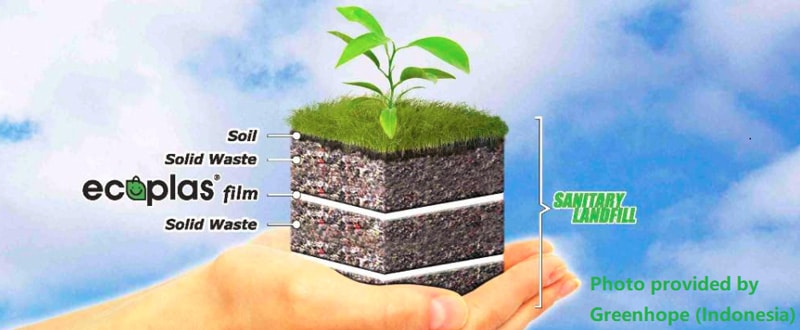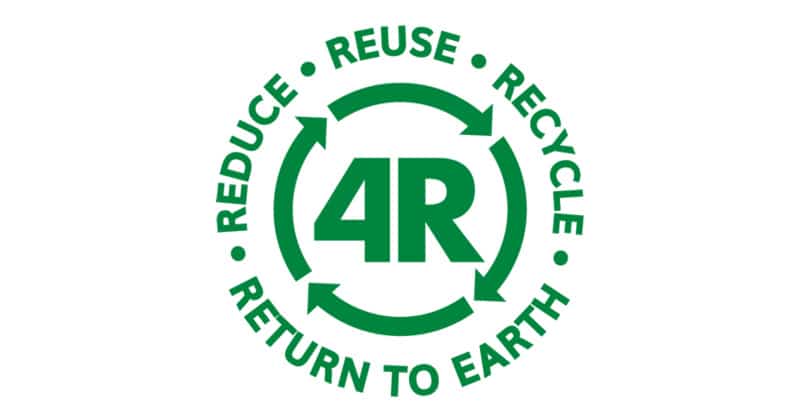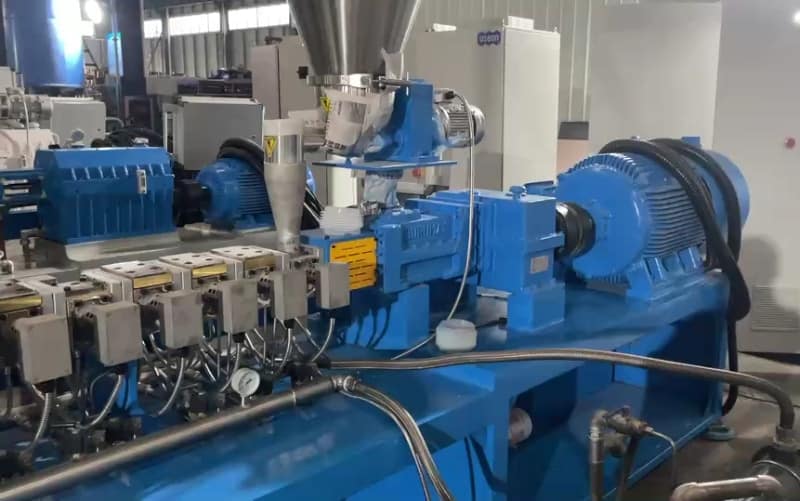Bioplastic Extrusion
Biodegradable plastic is an irresistible trend.
USEON is specialist for complete extrusion lines for bioplastics. We can provide entire plant for bio plastics extrusion & compounding.
Plastic is one of the best modern human inventions over the past 100 years, bringing exceptional benefits to our lives. However, given its durability and longevity, plastic waste becomes an immense challenge for a greener, better world.

Table of Contents
The Challenges
- When plastic becomes waste, its durability becomes a problem – it takes plastics 500 to 1000 years to naturally degrade
- In its natural degradation process, plastic undergoes physical fragmentation to become dangerous micro plastics
- Human behavior and inappropriate waste management can cause up to 8mn tons plastic / year “leak” into the ocean
Why Degradable Solutions?

We believe the potential benefits of 3R (Reduce, Reuse, Recycle), and we advocate it, however it is not enough because it does not deal with plastics’ end-of-life. We need the 4th R- Return to Earth. This will truly return plastic naturally back to earth and holistically close the life cycle loop.

REDUCE
We should only use what we need. Education, advocacy, incentives as well as disincentives (e.g. paid plastic shopping bags) to promote this idea can be implemented.

REUSE
Product design and education should encourage people to reuse as much as possible. For example in Indonesia, the thin plastic shopping bags are heavily reused as garbage can liner to the point that the thicker garbage liner plastic, which are prevalent in developed countries, do not exist.

RECYCLE
It is critical to continue improve plastic recycling rate; we all should do our best here. However, we need to also recognize there are pragmatic technical (e.g., multi-layer laminated plastic packaging) and economical (e.g., bulky polystyrene as well as other low value items are hard to collect economically) limitations. Plastic also generally cannot be recycled forever (it downgrades).

RETURN TO EARTH
After allowing for all 3R above, the degradable technology then will degrade plastics at chemical and molecular levels – cutting off its long hydrocarbon chains (not physical fragmentation!)- and allowing microbes to consume it and help reduce accumulation at the landfill. It will degrade the plastic within 2-5 years, much better than natural 500-1000 years.
USEON Solutions
1) Biodegradable Additive Masterbatch
Compound the Degradable Additive Masterbatch with any plastic such as PE/PET/PP etc. It speeds up the molecular and chemical degradation of plastic, thus helping to solve the massive accumulation of plastic waste.
Our customer Greenhope from Indonesia has this masterbatch with the name Oxium, which is US-patented. Oxium’s proprietary formula is made of naturally available minerals that are non-toxic, non-heavy metals.
Oxium is used as an additive in low dosage towards regular plastic production and has proven to be an effective and serves as an economical solution.
Technical Specifications of Extruder:
| Model | Diameter (mm) | Max. Speed (rpm) | Motor (kW) | L/D | Output (kg/hr) |
|---|---|---|---|---|---|
| SAT40 | 41 | 500 | 45 | 44 | 80-100 |
| SAT52 | 51.4 | 500 | 90 | 44 | 200-300 |
| SAT65 | 62.4 | 500 | 320 | 44 | 300-400 |
2) Biodegradable Plastic: PPC, PABT, PLA, PBS, PCL, TPS, PVA, PVOH
a) Melt PBAT compounding with PLA or PPC
- The melt PBAT material with temperature 240℃ is fed into twin screw extruder by a melt pump, and add the PLA or PPC pellets and chain extender additive into extruder by the loss-in-weight feeder. This is direct compounding which can save 40% energy and better dispersion, comparing with PBAT pellet compounding with PLA or PPC
- Needs long L/D for reacting
- Needs under water pelletizing system for high output capacity and automatically process
- Needs vacuum packing system
Technical Specifications of Extruder:
| Model | Diameter (mm) | Max. Speed (rpm) | Motor (kW) | L/D | Output (kg/hr) |
|---|---|---|---|---|---|
| SAT110 | 108 | 300 | 250 | 56 | 1200-1500 |
| SAT135 | 130 | 300 | 355 | 56 | 1800-2200 |
| SAT150 | 150 | 300 | 455 | 56 | 2600-3000 |
b) PLA/PBS compounding with starch powder
- Premix and long L/D for better dispersion
- Special feeder for anti-bridge
- Air cooling die face cutting for PLA base, and air cooling strand pelletizing for PBS base
- Need vacuum packing system
c) PVA compounding with starch
- Two stage mixer for premixing and reacting
- Special feeder for anti-bridge
- Air cooling die face cutting system, need water cooling jacket for die plate
- Need vacuum packing system


